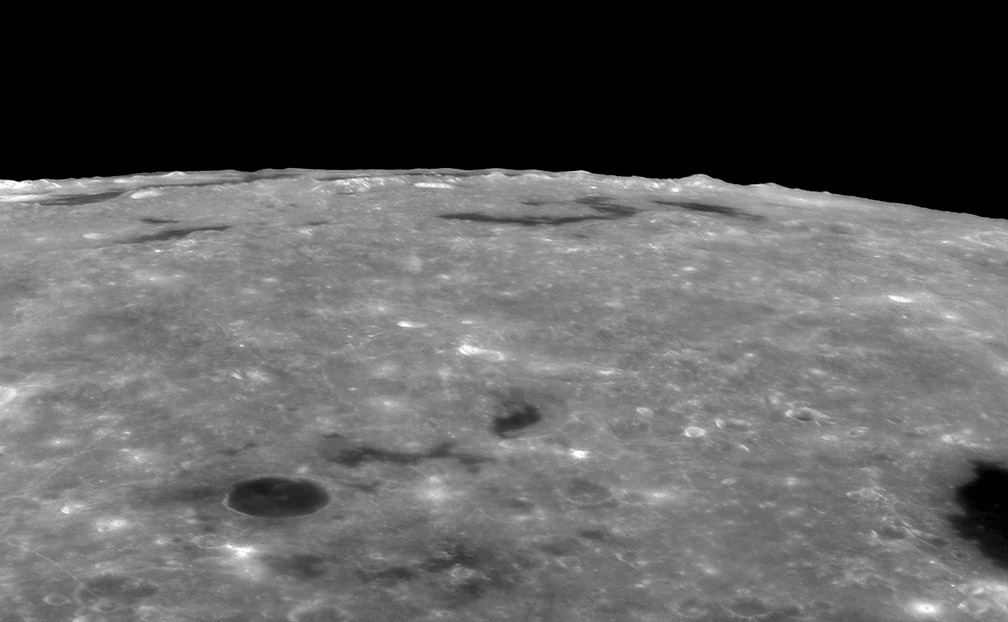image by Martin Fiedler & Thomas Boehme
The Appenines is a tall mountain range that rises steeply above Mare Imbrium immediately to the west, and more gently above diverse other terrain to the east. The Apennines are thought by some researchers to be the main rim of the Imbrium impact basin, and like a crater rim the Apennines are elevated above the terrains both inside and outside their crest. The Cordillera Mountains that dramatically surround Orientale (especially when seen from above) disappear when seen edge-on as in this informative image. Mountains that stick up reflect the low Sun light brightly, as seen for the two bright ranges, the Inner and Outer Rook Mountains. (Some of these peaks - in particular the two towards the right beyond dark Lacus Autumni - deserve designations. Is the tallest peak d’Alembert Alpha of Schröter?) The Cordillera appear to be more of a drop-off of the normal lunar surface - producing the scarp that constrains Lacus Autumni - than an elevated rim. That is one reason some lunar scientists regard the Outer Rook Mountains as the main rim of the Orientale Basin. Strangely, there is a very similar situation with the Altai Scarp. It is relatively flat to the west, but drops down precipitously toward the Nectaris basin center to the east. But no researcher considers it not to be the Nectaris rim…. Finally, on a different topic, do you remember the explanation for dark-floored Crüger and the cluster of nearby bits of mare material?
Technical Details:
Aug 5, 2007. 14″ Maksutov Newtonian + DMK21AF04 s/w (FireWire) camera + RG685 filter; Image processing: Giotto, Fitswork and Photoshop.
Related Links:
Rükl charts 39, 50 & VII
A view beyond the limb
Yesterday's LPOD: The Man, not the Crater
Tomorrow's LPOD: Non-Stereo Twosome
COMMENTS?
Register, Log in, and join in the comments.




